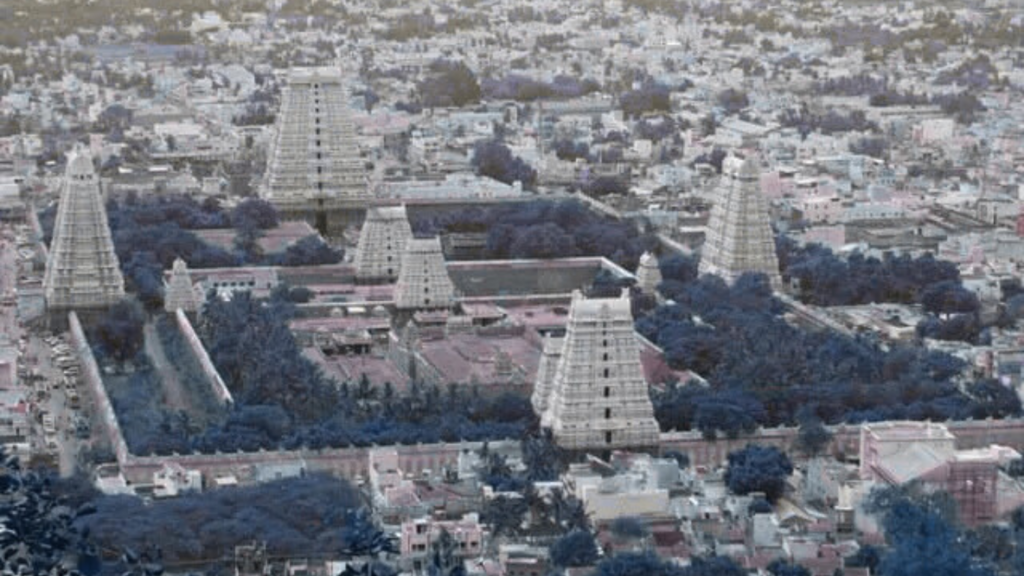The Arunachalam Temple, also known as the Annamalaiyar Temple, sits at the base of the holy Arunachala Hill in Tiruvannamalai, Tamil Nadu. It’s one of the most sacred places for devotees of Lord Shiva, drawing millions each year for its spiritual vibe and stunning Dravidian architecture. Dedicated to Shiva as Arunachaleswarar, the temple represents the element of fire in the Pancha Bhuta Sthalas, a group of five temples linked to nature’s elements. Knowing the temple’s timings is key to planning a smooth visit, whether you’re there for darshan, pooja, or the famous Giri Pradakshina. This article breaks down the Arunachalam Temple timings, rituals, and tips to make your trip unforgettable, all in a simple, heartfelt way.
A Brief Introduction to Arunachalam Temple
Tucked in Tiruvannamalai, the Arunachalam Temple is a massive 25-acre complex, one of India’s largest Shiva temples. Its four towering gopurams, especially the 217-foot Rajagopuram, are jaw-dropping. Built in the 9th century by the Chola dynasty, it’s steeped in history, with expansions by Vijayanagara and Nayak rulers. The temple’s heart is the Agni Lingam, symbolizing fire, and it’s paired with the shrine of Goddess Parvati as Unnamulai Amman. Legends say Shiva appeared as a pillar of fire here, making it a hotspot for spiritual seekers. The temple’s vibe, especially during festivals like Karthigai Deepam, is electric, with millions flocking to witness the divine energy. Knowing when to visit helps you soak in this sacred space fully.
Arunachalam Temple Daily Timings
The temple opens its doors at 5:30 AM and closes at 8:30 PM, with a break from 12:30 PM to 3:30 PM. On busy days like Saturdays, Sundays, full moon days, or holidays, darshan extends until 7:45 PM to accommodate crowds. These hours let devotees plan their visit around daily rituals or special poojas. Early mornings are perfect for a calm experience, while evenings buzz with energy. Always check the official temple website for updates, as timings can shift during festivals. Arriving early or on weekdays helps avoid long queues, making your darshan smoother and more peaceful.
Morning Schedule (5:30 AM – 12:30 PM)
The day kicks off at 5:30 AM with the Ushathkala Pooja, a serene ritual perfect for early risers. From 6:00 AM to 8:00 AM, general darshan is open, followed by the Kalasandhi Pooja until 9:00 AM. The Uchikala Pooja wraps up the morning by noon. These hours are less crowded, offering a quiet chance to connect with the divine. Devotees can join rituals like abhishekam or simply soak in the temple’s calm vibe. Arriving by 6:00 AM ensures a relaxed visit before the midday break.
Evening Schedule (3:30 PM – 8:30 PM)
The temple reopens at 3:30 PM, with general darshan until 5:30 PM when the Sayaratchai Pooja begins. Evening darshan continues until 8:30 PM, ending with the Ardhajama Pooja at 9:00 PM. The evening is vibrant, with devotees chanting and lamps glowing. It’s a great time for those who love a lively atmosphere. On busy days, darshan extends slightly, but expect longer queues. Visiting around 4:00 PM can help you beat the evening rush and enjoy the rituals.
Daily Rituals and Pooja Timings
The Arunachalam Temple hosts six daily poojas, each with its own charm. These rituals, performed by Shaivaite priests, include abhishekam (sacred bath), alankaram (decoration), naivedyam (food offering), and deepa aradhanai (lamp waving). They happen at 5:30 AM (Ushatkalam), 8:00 AM (Kalashanti), 10:00 AM (Uchikalam), 6:00 PM (Sayarakshai), 8:00 PM (Irandamkalam), and 10:00 PM (Arddha Jamam). Each pooja is a chance to witness ancient traditions, with music from nagaswaram and tavil adding to the vibe. Devotees can join or watch, but booking special poojas in advance is wise, especially during festivals.
Key Poojas to Attend
The Ushathkala Pooja at 5:30 AM is a must for its peaceful energy, perfect for starting your day spiritually. The Sayaratchai Pooja at 6:00 PM is vibrant, with evening crowds adding to the devotion. The Arddha Jamam at 10:00 PM feels intimate, as the temple prepares to close. These poojas are open to all, but special sevas like abhishekam (Rs. 1,000–4,500) need booking. Check the temple’s website for availability, as slots fill fast during peak times.
How to Participate in Rituals
Joining rituals is simple but requires respect. Wear traditional clothes—dhotis for men, sarees or salwar kameez for women—and arrive early to secure a spot. For special sevas, book online via the temple’s official site or at the temple office. Carry ID proof for bookings. Offerings like flowers, fruits, or coconuts are welcome, but check with priests for guidelines. Stay quiet and follow the queue to keep the sacred mood intact. Participating feels like a deep connection to Shiva’s energy.
Giri Pradakshina: The Sacred Walk
Giri Pradakshina, or Girivalam, is a 14-km barefoot walk around Arunachala Hill, believed to cleanse sins and bring blessings. It’s especially popular on full moon days, when thousands join in. The best times to start are 4:00 AM, 4:00 PM, or 10:00 PM to avoid the sun. The walk takes 3–5 hours, passing eight lingam temples. Devotees chant “Om Arunachaleswaraya Namaha” for spiritual focus. It’s a tiring but transformative journey, so carry water and wear comfy clothes. Full moon days are crowded, so plan ahead for a smoother experience.
Best Times for Giri Pradakshina
Early morning at 4:00 AM is cool and calm, ideal for a reflective walk. The 4:00 PM slot suits those who prefer daylight, while 10:00 PM offers a quieter, starry vibe. Full moon days are auspicious but packed, so weekdays or non-festival times are better for peace. Check the 2025 Girivalam calendar on the temple’s site to pick your date. Starting at the West Gopuram and visiting the Ashta Lingams in order adds to the ritual’s meaning.
Tips for a Smooth Girivalam
Wear light, traditional clothes and carry a small bag for water and snacks. Start at the temple’s West Gopuram after praying to Arunachaleswarar. Walk clockwise, keeping the hill on your right. Stop at the eight lingam shrines for blessings. Avoid footwear to honor the tradition, but watch for rough patches. Rest at tirthams (sacred ponds) if needed. Booking a guide or joining a group can make the walk more meaningful, especially for first-timers. Stay hydrated and pace yourself.
Festival Timings and Special Events
The temple shines during festivals like Karthigai Deepam (November–December), when a massive lamp is lit atop Arunachala Hill, drawing three million pilgrims. Maha Shivaratri and full moon days also see special poojas and extended darshan. Festival timings often differ, with the temple staying open longer or hosting extra rituals. For example, Karthigai Deepam includes early morning abhishekams and late-night ceremonies. Check the temple’s website or contact the office for exact schedules. Visiting during festivals is magical but requires planning due to huge crowds.
Karthigai Deepam Highlights
Karthigai Deepam, held on the full moon in November or December, is the temple’s biggest event. The hilltop lamp, lit at dusk, symbolizes Shiva’s fiery lingam and is visible for miles. Special poojas start at 4:00 AM, with darshan queues stretching for hours. Book VIP or special darshan (Rs. 50) for faster access. The festival lasts 10 days, with processions and music. Arrive a day early, book accommodation, and carry ID for darshan passes. It’s a once-in-a-lifetime spiritual high.
Other Festivals to Experience
Maha Shivaratri in February or March features all-night poojas and fasting, with darshan from 4:00 AM to midnight. Monthly full moon days bring Girivalam crowds and extended hours until 7:45 PM. Chitra Pournami and other lunar festivals have special abhishekams. These events are less crowded than Karthigai Deepam but still vibrant. Book poojas or darshan online to save time. Visiting during these festivals lets you feel the temple’s deep spiritual pulse.
Darshan Options and Booking
The temple offers general (free) and special darshan (paid, Rs. 50). General darshan can take 2–3 hours, while special darshan cuts it to 1.5–2 hours and includes water and buttermilk. VIP darshan is pricier but faster. Book online at the temple’s official site by selecting your date, time, and service. You’ll need ID proof and payment via card or net banking. Offline tickets are available at the temple office, but they’re limited. Book early for festivals, as slots vanish fast. Online booking makes your visit hassle-free.
General vs. Special Darshan
General darshan is free but involves long waits, especially on weekends or full moon days. It’s great for those with time and patience. Special darshan (Rs. 50) offers a quicker queue and small perks like water. VIP darshan, costing more, is the fastest but less common. For a calm experience, choose general darshan on weekdays. Special darshan suits festival visits or tight schedules. Both let you see the Agni Lingam up close, but plan based on your budget and time.
How to Book Darshan Online
Visit the temple’s official website and find the “Darshan Booking” or “Special Seva” section. Choose general, special, or VIP darshan, then pick your date and time. Enter your name, email, phone, and ID details. Pay online via card or net banking. You’ll get a confirmation receipt—your darshan pass. Print it or save it on your phone. Book at least a week ahead for busy days. Offline booking at the temple office works too, but online is easier and safer.
Tips for Visiting Arunachalam Temple
To make your visit smooth, wear traditional attire and bathe before entering. Walk barefoot inside the temple and stay quiet to respect the sacred space. Carry ID for darshan or pooja bookings. Book tickets online to skip long lines. Arrive early for morning poojas or darshan to avoid crowds. Stay hydrated, especially during Giri Pradakshina. Check festival schedules and book accommodation early for events like Karthigai Deepam. Follow priests’ instructions and queue patiently. These simple steps ensure a peaceful, meaningful visit to this holy site.
Dress Code and Etiquette
Men should wear dhotis or long pants with shirts, while women should opt for sarees or salwar kameez. Avoid shorts or revealing clothes. Bathe before entering to stay pure. Remove shoes at the entrance and walk barefoot. Keep noise low and avoid phones during poojas. Offer prayers with focus and respect priests’ guidance. These rules honor the temple’s sanctity and make your visit more respectful and immersive.
Best Time to Visit
October to March is ideal, with cooler weather and festivals like Karthigai Deepam. Early mornings (5:30–7:00 AM) offer a calm darshan, while evenings suit those who love energy. Weekdays are less crowded than weekends or full moon days. For Giri Pradakshina, start early or late to dodge heat. Avoid peak summer (April–June) due to scorching temperatures. Planning around these times ensures a comfortable, spiritual experience.
How to Reach Arunachalam Temple
Tiruvannamalai is well-connected. The nearest airport is Chennai International (180 km), with taxis or buses to the temple. Tiruvannamalai railway station, just 2 km away, links to Chennai and other cities. Buses from Chennai (207 km, 4.5 hours) or Villupuram (61 km) are frequent. By car, it’s a 4-hour drive from Chennai. Autos and cabs are available locally. Book transport early during festivals. The temple’s address is Arulmigu Arunachaleswarar Temple, Tiruvannamalai – 606601, Tamil Nadu.
Nearby Attractions to Explore
After visiting, check out Arunachala Hill for a spiritual trek with stunning views. Sri Ramanasramam, linked to Ramana Maharshi, offers a peaceful retreat. Virupaksha Cave and Skandashramam are great for meditation. The Pachaiamman Temple and Gingee Fort (historic fortress) are nearby gems. These spots add depth to your trip, blending spirituality and history. Plan a day to explore them post-darshan.



